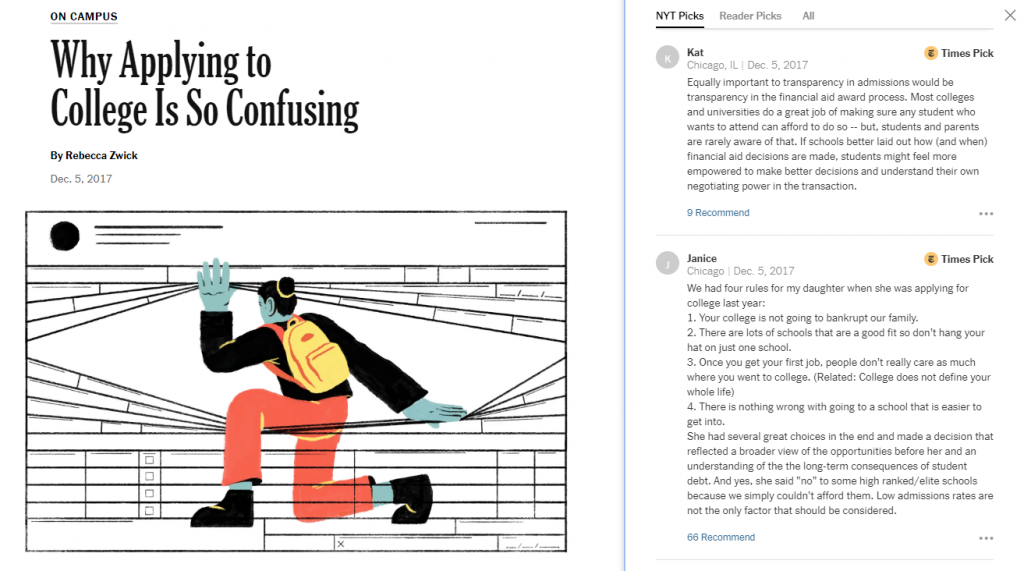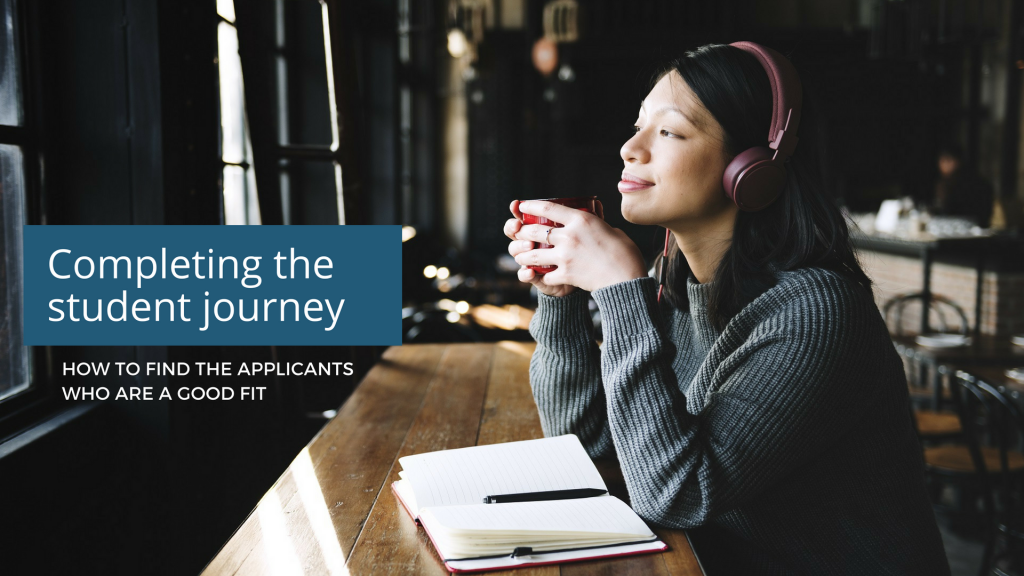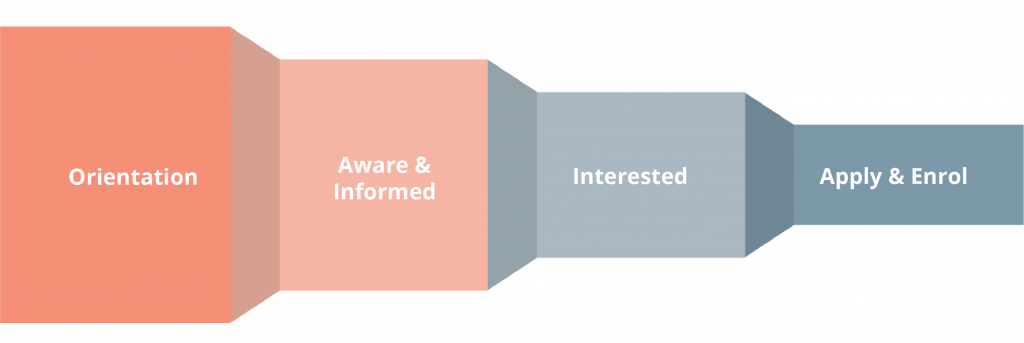Completing the Student Journey on Studyportals | part 8
Finding applicants who are a good fit for your institution
Here’s a hypothetical situation: You’re comparing apartments on Airbnb, you’ve made your pick, and… ouch, there is no “book now” button. Now imagine this was a degree comparing website: You just lost an enthusiastic candidate.
Each student will go through the phases of searching, shortlisting, comparing, selecting and applying for one or several degrees over the application season. Some study choice websites support prospective students through one or several of these stages, but none integrates them all into one comprehensive student journey.
Hopping between sites and pages can be tedious for students, and as a result, many of them will drop out in the process or will need high levels of communication support to complete the application process.
Chances are your institution is investing in targeting international student on various comparison platforms. As a university with an ambitious international growth plan, you care about your brand and programme visibility. But there is a problem: you’re still not getting the quality applicants you are aiming for. This is because, at some point in their journey, students get lost among various platforms, and might not complete the process of submitting their application to your programmes.
Why let the students run around in circles when you can make their journey through admissions a lot more straight-forward?
Own the student relationship from the beginning
Admissions officers often spend excessive time processing submissions that are incomplete or simply don’t meet the academic threshold. Why, then, have students apply in the first place? Well, there are two possible answers. The first one is that students are unfamiliar with or cannot find the specific requirements to finalise their application.
Step number one to a comprehensive student journey is eliminating the guesswork about your academic requirements. Making academic requirements visible and 100% transparent for all interested students and across all platform you are using to promote your programmes will help students understand whether they should proceed about applying with your institution. This is something that we at Studyportals have been working on for years in our attempt to improve transparency in international education and make it easier for students to compare their different study options.
The other possible answer is a poor fit. Some students will shoot for the top-tier universities because the idea of being admitted to the most desirable and highly selective institutions can be perceived as a validation of the personal potential and skills of a candidate. However, research shows this is not always the best way to go about it. Students who chose an institution that matches their background and aspirations as closely as possible are more likely to see their education through and graduate. So, step number two would be helping applicants understand whether there is a good fit between your offer and their academic, social and financial needs.
Help students understand their personal and financial fit
A recurring feature of the application process is the messiness of the admissions criteria for both future students and admissions officers. But one thing is certain: meeting the academic criteria is only the first step.
“It’s a widespread misconception that applicants have an automatic right to be admitted to the school of their choice if they have higher grades or test scores than other candidates, says Rebecca Zwick, a senior researcher at ETS. ”In her piece “Why Applying to College is so confusing”, the author contemplates the fuzzy reality of admissions criteria in higher education:
“Mission statements don’t necessarily make it easier for students to understand the nuts and bolts of admissions, but they are absolutely vital. A school’s admissions policy must flow from its mission.”
The financial fit weighs just as much as an applicant’s demonstrated credentials and abilities. International education usually comes at a price, and it can also come as a disappointment if students get an admission letter for programmes that do not match their financial possibilities. The same article mentions some interesting insights from parents of students:

Students need to carefully budget for their study abroad. This can be a rather complex task for a first-time applicant as they need to take into consideration tuition fees, possible financial aid from your institution or government agencies, but also costs of living, taxes, medical care and transportation.
As “Can I finance my study” is a critical question a student needs to answer, it also makes it an integral part of their journey. Therefore, embedding financial information into your application process is imperative.
Additionally, helping students understand their fit with your campus culture, diversity policy and student life is also vital. This will, on the one hand, help students make a well-informed choice about what programmes and universities will truly maximize their chances of development and success. On the other hand, it will reduce the bulk of poorly-fitting applications your admissions office receives during peak season.
Like Rebecca Zwick suggests, “a more comprehensive explanation of what drives their [colleges’] choices would go a long way toward lifting the veil from a system that many regard as an impenetrable mystery.”
Weave the application into the student journey
The final step to complete the candidate’s journey to enrolment is to connect the application submission to all the previous steps.
Once a prospective student has researched and weighed all previously mentioned factors, they are enthusiastic and confident they’ve made the right choice. And this is the exact moment you need to lead them into the application process.
To prevent quality students from dropping out, you would want to see them through your admissions seamlessly and uninterruptedly, in one place.
More from the Product Innovation series:
Part VII – helping students find their best-fit programme
Part VI – simplifying search results
Part V – encouraging website registrations
Part IV – mobile-friendly display
Part III – improving search results
Part II – insights into visa requirements
Part I – adding transparency about admission chances
About the series – introduction







